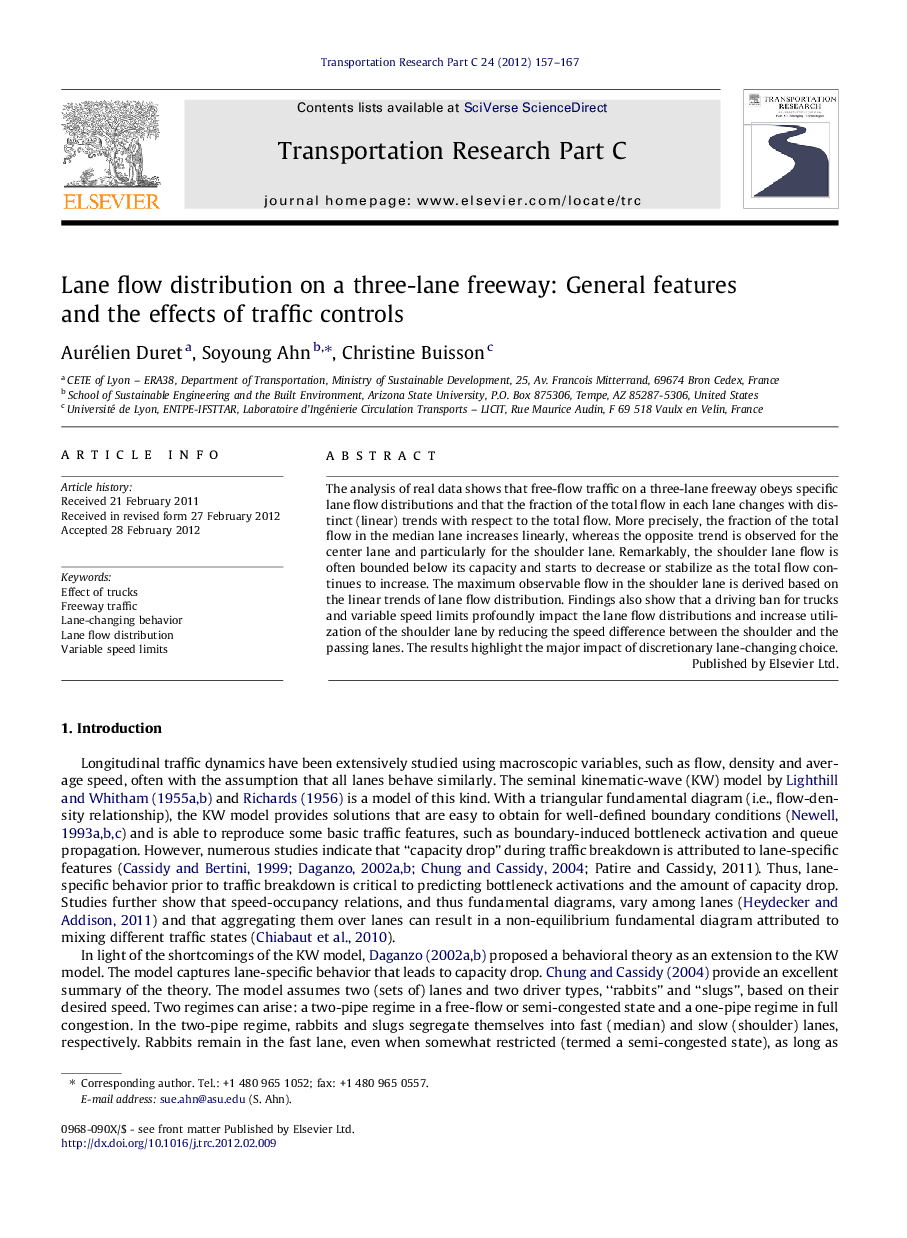| Article ID | Journal | Published Year | Pages | File Type |
|---|---|---|---|---|
| 525295 | Transportation Research Part C: Emerging Technologies | 2012 | 11 Pages |
The analysis of real data shows that free-flow traffic on a three-lane freeway obeys specific lane flow distributions and that the fraction of the total flow in each lane changes with distinct (linear) trends with respect to the total flow. More precisely, the fraction of the total flow in the median lane increases linearly, whereas the opposite trend is observed for the center lane and particularly for the shoulder lane. Remarkably, the shoulder lane flow is often bounded below its capacity and starts to decrease or stabilize as the total flow continues to increase. The maximum observable flow in the shoulder lane is derived based on the linear trends of lane flow distribution. Findings also show that a driving ban for trucks and variable speed limits profoundly impact the lane flow distributions and increase utilization of the shoulder lane by reducing the speed difference between the shoulder and the passing lanes. The results highlight the major impact of discretionary lane-changing choice.
► Free-flow traffic obeys specific lane flow distributions (LFDs). ► The LFDs change linearly with respect to the total flow. ► The shoulder lane flow diminishes as the total flow exceeds certain level. ► A driving ban for trucks (DBTs) and variable speed limits (VSLs) impact LFDs. ► DBT and VSL promote higher utilization of the shoulder lane.
